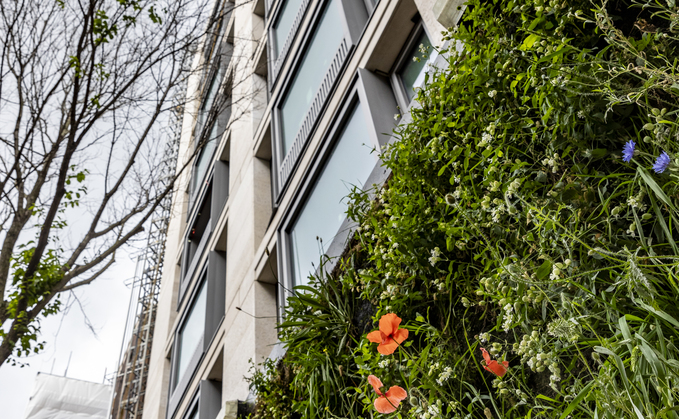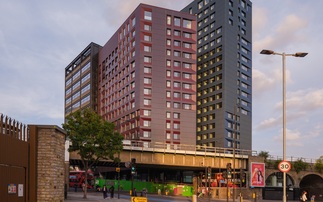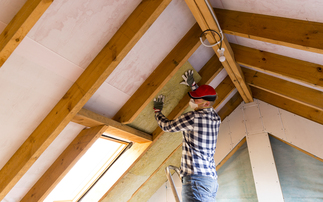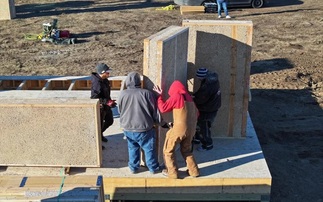
Partner Insight: Decarbonising the built environment is crucial to meeting global climate goals
Our sector is a significant contributor to global emissions, and with the World Meteorological Organisation predicting that 2024 will be our warmest year yet, and the devastating recent weather events in Spain and the United States fresh in our minds, the push to take action has never been stronger. It's no coincidence that the Buildings Breakthrough Initiative was a key topic at COP28, and that those discussions are expected to continue through to COP29.
As cities grow, so does demand for buildings and connective infrastructure. Shifting to low- and no-carbon construction practices – at scale and at pace – cannot wait; our traditionally fragmented industry must pull together to do more to mobilise.
A model for true collaboration
While individual company policies and operational ways of working certainly make an important difference, the goals and practices agreed at project level have the power to make a substantial impact.
Decarbonisation at the pace and scale described requires collaboration across the built environment value chain – from designers and clients to contractors and suppliers. In a traditionally fragmented industry, we must rethink the way we operate, driving towards net zero together. That means sharing information, data, drawbacks and successes in a much more open way.
Setting a clear ambition helps all parties to pull together, pooling ideas for goal achievement and creating a joint plan. Early, and regular, engagement enables critical analysis of the decarbonisation levers available and a shared view of progress.
For Laing O'Rourke, the 25 Baker Street mixed development, commissioned by Derwent London, represented a blueprint for this more collaborative way of working. This project was the focus of our panel discussion at the 2024 Net Zero Festival.
The ambitious contractual carbon reduction targets required an integrated, cross-party approach. Carbon management was a critical metric from the outset, which helped drive sustainability-focused behaviour and decision-making. This permeated design decisions, procurement processes, site logistics and commercial checks. Carbon hotspots were identified in the design, along with carbon-critical procurement packages.
Strategic focus on these areas helped set the tone for the project. I believe this was the key that unlocked a true level of collaboration and openness towards the common goal of a "greener" project. As we approach practical completion in 2025, we are on track to realise a significant carbon reduction from the design baseline.
At 25 Baker Street we were able to reduce site emissions by 80 per cent versus the baseline by eliminating diesel use, deploying electric plant and optimising site logistics. The use of low carbon concrete mixes also made a significant difference in reducing embodied carbon, particularly within structures.
Data collection and carbon measurement were prioritised. This is relatively straightforward for concrete and steel structures, but much less mature in areas such as mechanical, electrical and plumbing, which contain multiple material components from many different suppliers. A new level of openness was required to manage these more difficult-to-quantify products, recognising that as assumptions were replaced with higher quality data, we collectively had to become comfortable with changes to carbon reporting – and not always in the direction desired.
Regular communication allowed the full project team, i.e. the client, main contractor, designers and suppliers, to swiftly agree re-baselining, to target hotspots and keep digging into the data.
This culture also provides a useful environment for innovation and trialling new products. Low carbon innovation in construction is an active and thriving field, with new technologies coming to market regularly. Construction projects span many years, and having the flexibility within projects to analyse and deploy new products - and collaborative relationships that can withstand changing goalposts - is a key route to goal achievement.
The newly-published Net Zero Buildings Standard is a welcome development in best practice, supporting a common approach and acting as a useful tool for business case development as the sector decarbonises.
Accepting a level of imperfection
Not all carbon data reporting is equal, and as an industry we're at the beginning of a much bigger journey when it comes to data integrity. Setting clear expectations for carbon data across the supply chain, and agreeing a methodology, are vital to track progress towards carbon goals, as well as identifying opportunities to improve a project's carbon position.
Perfection can, however, be the enemy of progress. On a typical project, 80 per cent of emissions probably come from 20 per cent of the supply chain, so focusing data hygiene efforts on the biggest hitters is likely to yield the most actionable results.
This is as true for business reporting as it is for project reporting. Laing O'Rourke recently announced our validated science-based targets, which include a new near-term carbon reduction target for Scope 3 purchased goods and services.
In developing our targets, we prioritised obtaining the highest quality data for our most carbon intensive products – concrete, steel and glazing – as this is where our most significant savings can be made. Our supply chain partners are working closely with us to help provide a clear picture, with Environmental Product Declarations (EPDs) at the top of the carbon data hierarchy.
We're also supporting our less mature suppliers in upskilling their teams and developing their carbon measurement practices, so that they are equipped to help us achieve our carbon reduction goals.
Establish a culture of openness
On any project there will be bumps in the road. The projects we work on are long-term. While target setting is a helpful way of focusing all parties on reducing carbon, establishing a culture of transparency is hugely important if we are all to learn and progress.
As carbon measurement and reporting evolves in the construction sector, the phrase "each time we look for carbon, we find a bit more" is commonplace. I am passionate about bringing that discussion into the open. Carbon targets are useful, but they must also drive the right behaviour and I think we're still working through what a realistic target looks like within the industry – undoubtedly, it will evolve.
Forums like BusinessGreen's Net Zero Festival are essential for convening stakeholders from the built environment and beyond to share learnings and develop action plans. It was a pleasure to participate in the event, where I was joined by our partners at Derwent London, Arup and Heidelberg Materials to discuss how we have worked together on 25 Baker Street, the lessons we've learned and how we're using that insight to drive progress towards net zero.
Rossella Nicolin is head of sustainability for Europe at Laing O'Rourke.
While this year's event may have drawn to a close, BusinessGreen is now working on a new calendar of events for 2025 - sign up here to stay in the loop.
This article is sponsored by Laing O'Rourke.






